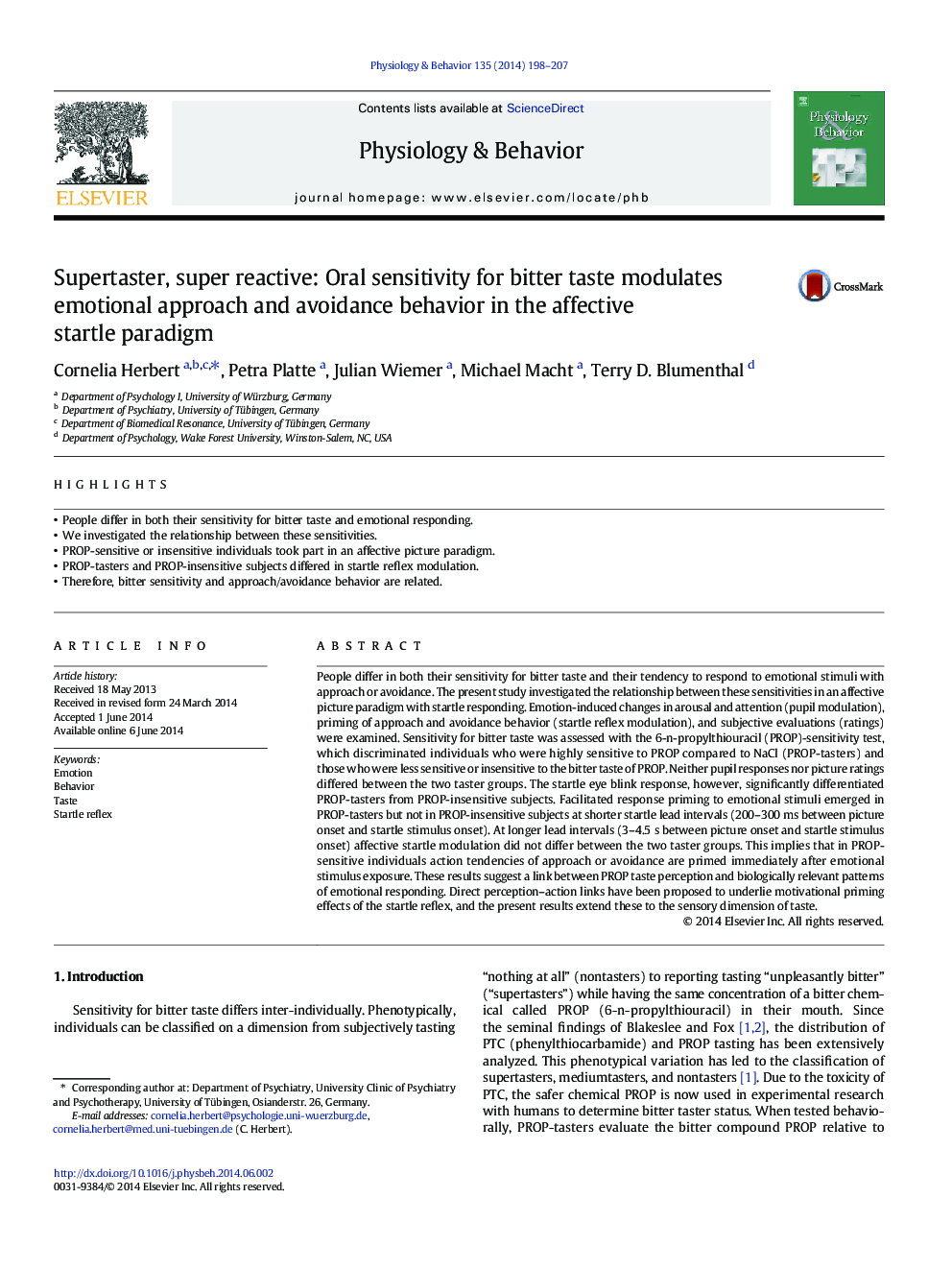| کد مقاله | کد نشریه | سال انتشار | مقاله انگلیسی | نسخه تمام متن |
|---|---|---|---|---|
| 2844262 | 1571182 | 2014 | 10 صفحه PDF | دانلود رایگان |

• People differ in both their sensitivity for bitter taste and emotional responding.
• We investigated the relationship between these sensitivities.
• PROP-sensitive or insensitive individuals took part in an affective picture paradigm.
• PROP-tasters and PROP-insensitive subjects differed in startle reflex modulation.
• Therefore, bitter sensitivity and approach/avoidance behavior are related.
People differ in both their sensitivity for bitter taste and their tendency to respond to emotional stimuli with approach or avoidance. The present study investigated the relationship between these sensitivities in an affective picture paradigm with startle responding. Emotion-induced changes in arousal and attention (pupil modulation), priming of approach and avoidance behavior (startle reflex modulation), and subjective evaluations (ratings) were examined. Sensitivity for bitter taste was assessed with the 6-n-propylthiouracil (PROP)-sensitivity test, which discriminated individuals who were highly sensitive to PROP compared to NaCl (PROP-tasters) and those who were less sensitive or insensitive to the bitter taste of PROP. Neither pupil responses nor picture ratings differed between the two taster groups. The startle eye blink response, however, significantly differentiated PROP-tasters from PROP-insensitive subjects. Facilitated response priming to emotional stimuli emerged in PROP-tasters but not in PROP-insensitive subjects at shorter startle lead intervals (200–300 ms between picture onset and startle stimulus onset). At longer lead intervals (3–4.5 s between picture onset and startle stimulus onset) affective startle modulation did not differ between the two taster groups. This implies that in PROP-sensitive individuals action tendencies of approach or avoidance are primed immediately after emotional stimulus exposure. These results suggest a link between PROP taste perception and biologically relevant patterns of emotional responding. Direct perception–action links have been proposed to underlie motivational priming effects of the startle reflex, and the present results extend these to the sensory dimension of taste.
Journal: Physiology & Behavior - Volume 135, August 2014, Pages 198–207